Increasingly rare it may be, but the Fiat X1/9 is a gem of a small sports car that really was ahead of its time – and getting behind the wheel of one today will open any driver’s eyes to what a clever and charming car it is.
Mercenary self-interest spurred coachbuilder Bertone to come up with the basis of the X1/9 and pitch the idea to Fiat. Keenly aware that potential safety legislation in the US would put an end to the Fiat 850 Spider it was building for the Italian car maker, Bertone designed a small sports car to meet any such impending laws.

This car first saw the light of day as the Autobianchi A112 Runabout concept car in 1969 and used Fiat’s new 1.3-litre engine from the 128. However, Bertone mounted the engine in the middle of the car, giving its concept a low, wedge-shaped profile for a modern style that made a contemporary MG Midget or Triumph Spitfire seem like old hat.
Fiat bought into this new sports car concept and launched the X1/9 as its own in late 1972. The project name survived as the production moniker because, although the X1/9 was notionally part of the 128 series, it was mid-engined and didn’t fit with Fiat’s naming policy of the time. None of this mattered to Bertone as it was happy to have secured the work, as it built the bodies and supplied them to Fiat for the engines to be fitted and for final finishing.
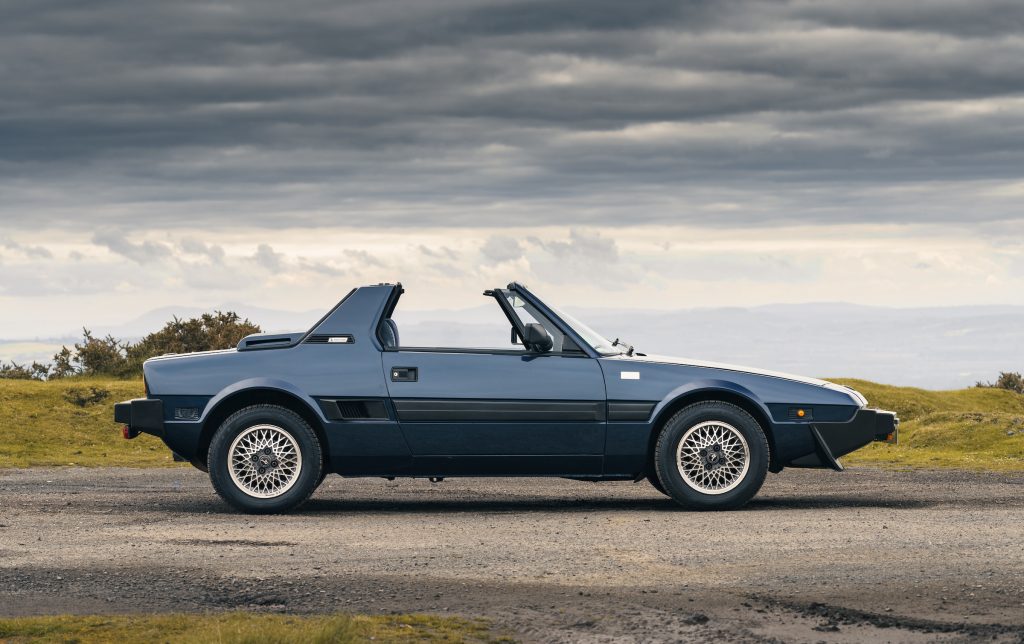
The engine for the X1/9 was a 1290cc four-cylinder unit with aluminium cylinder head and sump. It delivered 75bhp, which was enough to see the car from rest to 60mph in 12.7 seconds and on to 106mph thanks to the car’s aerodynamic shape. A four-speed manual gearbox was the only transmission option, and all X1/9s came with a removable targa roof panel to turn it from coupé to convertible in just a few seconds. The roof stashes neatly across the front boot space, and there’s another decent boot behind the engine bay.
For the first four years of its production life, the X1/9 was only offered in left-hand drive spec, which was not a problem for Fiat as most sales of its new mid-engined sports car were in the US. For a while, Britain’s Radbourne Racing converted cars from left-hand drive to right but this became redundant in 1976, when Fiat started building right-hand drive models. None of the converted cars are thought to still exist.
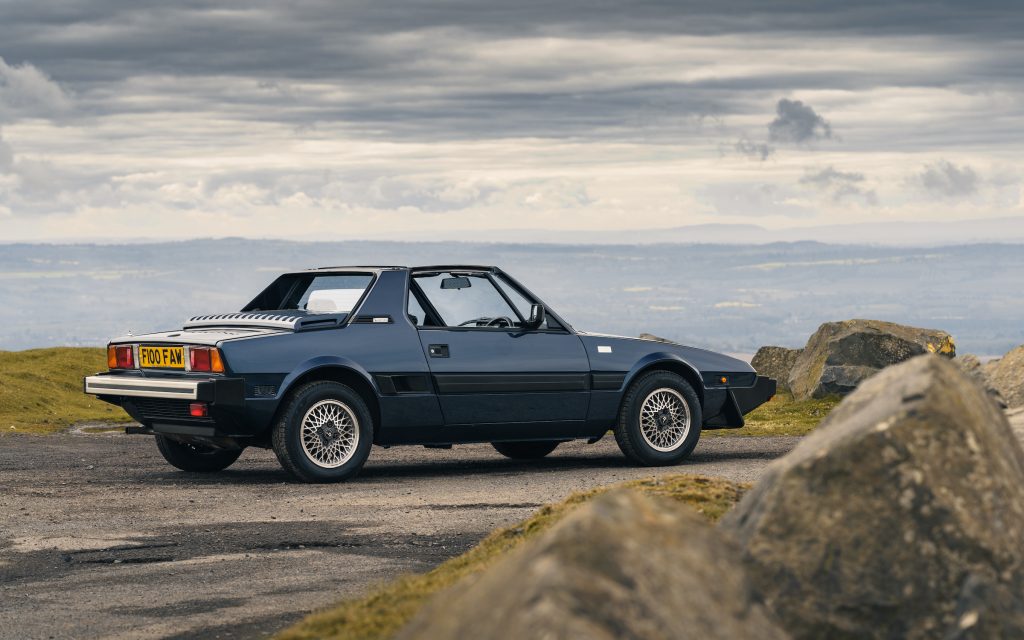
By 1979, Fiat acquiesced to demand for more power for the X1/9, replacing the 1.3-litre engine with a 1498cc engine from the Strada hatch. With 85bhp, it offered a useful 10bhp increase in power and saw the 0-60mph time drop to 10.4 seconds while upping top speed to 112mph. Three years after this, Fiat stopped making the X1/9 itself, but Bertone took over production and swapped the Fiat badges for its own. The Italian coachbuilder also introduced the VS model with two-tone paint, alloy wheels, electric windows, and leather seats.
The X1/9 carried on in this way up to 1989, when the curtain came down on this bold small sports car with the Gran Finale edition. This last hurrah for the X1/9 came with metallic blue or burgundy paint, and capped the car’s 17-year life span.
What’s an X1/9 like to drive?
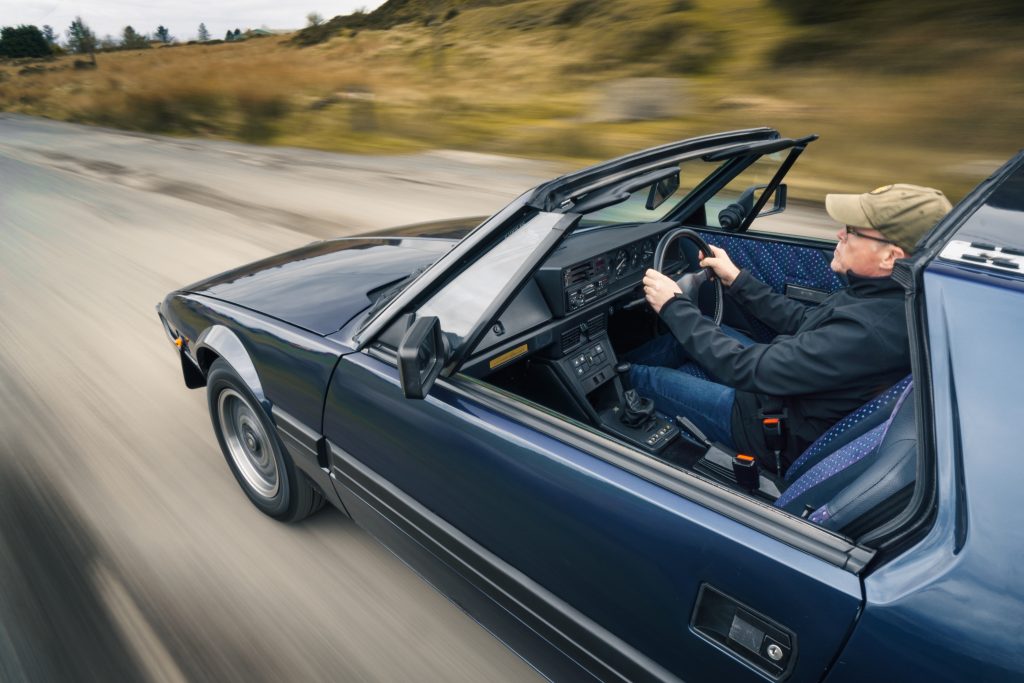
Until the Fiat X1/9 was launched, mid-engined sports cars were the preserve of supercars and low volume specialist machinery. Even Porsche’s 914 was too exotic and expensive to be considered as mass market, but Fiat took the simple idea of mounting a transverse front-drive engine and gearbox package in the middle and, hey presto, they had an affordable mid-engined sports car.
Fiat and Bertone further enhanced the advantages of concentrating the mass of the car in its middle by locating the fuel tank and spare wheel between the engine and passenger compartment, with the spare accessed from behind the seats. It all added up to a car that was more than a match for the handling of its contemporary rivals such as the MG Midget and Triumph Spitfire.
While those traditional roadsters still had their appeal, the X1/9 was a bold new car and underlined this sharp handling. Push hard and there’s more grip and poise than you’d expect from its modest tyre size. Modern rubber allows the Fiat to dig in even harder, making this a superb car for anyone who loves maintaining momentum down a country road. There’s not much lean in the suspension, but enough to let you know the car’s limits are being reached, while the mid-engined set-up only steps into oversteer when really provoked by the keen or ham-fisted driver.
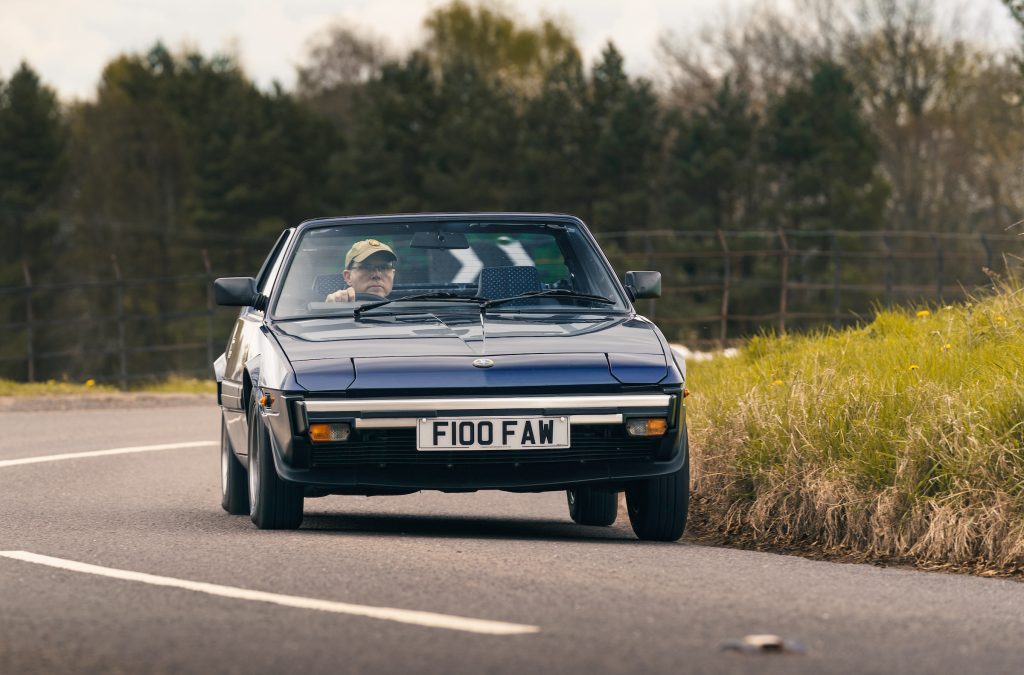
With little weight over the nose of the X1/9, it has light unassisted steering that is both direct and full of feel. It adds to the sense this is a car at its best on twisty roads rather than wide open stretches. Even rough surfaces do little to upset the X1/9 as its independent all-round suspension by MacPherson struts absorbs most ruts and ridges very well. The brakes, too, are effective, though there’s no servo, so need a firmer press than you might initially expect.
While the X1/9’s engines have humble hatchback origins, even Fiat’s humblest hatches had peppy, willing powerplants, and that feeling is carried across wholesale. They’re at their best at higher revs, as peak power doesn’t arrive until 6000rpm, and maximum torque is modest, even for a car weighing between 880–920kg depending on the model. However, working the engine through the gears is all part of the fun of the X1/9. If you want a car to cover more miles, the 1500 is the one to choose with its greater power and five-speed gearbox.
Inside the X1/9, the cabin is comfortable for anyone up to six feet in height, but taller drivers will find the seat doesn’t adjust back far enough. However, all of the controls are well placed and there’s good all-round vision. One downside, however, is the bonnet and boot release levers are mounted in the left-hand door pillar, which is a quirk you must get used to with a right-hand drive version. Still, it’s a small demerit when you see how much luggage space the X1/9 manages to offer between its front and rear compartments – for a tiny mid-engined sports car, it’s surprisingly practical.
How much does an X1/9 cost?
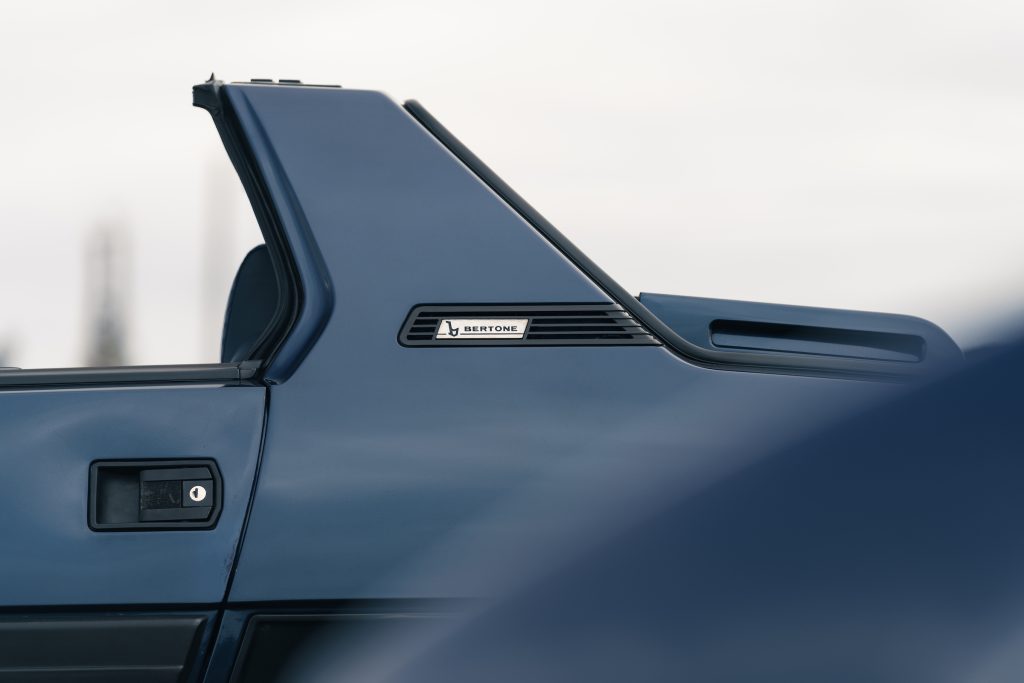
If you’re looking for an X1/9 as a project, a running but rough car will cost around £2500 for either a 1300 or 1500. The smaller-engined version of the X1/9 is rare in the UK with right-hand drive as it was only on sale here for three years, so is worth saving. With the 1500, the cost of restoration will far outweigh its end value so it’s worth spending around £5500 to own a car in good condition that just needs some peripheral tidying.
There are usually a few very clean, show-ready X1/9s on sale in the UK with right-hand drive for around £9000. This will bag you one of the last Gran Finale models or also an imported early left-hand drive car. Beyond this sum, only the very best concours examples will nudge up to £20,000.
What goes wrong and what should you look for?
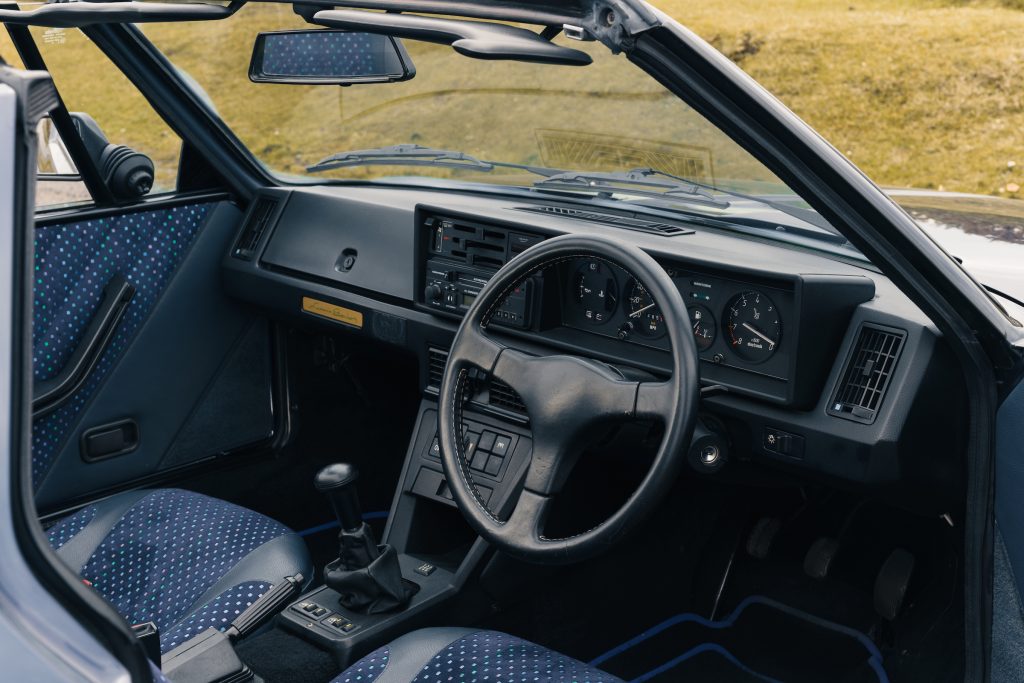
The X1/9 has a lust for rust that leaves no panel, joint or seam of its body and structure free from suspicion. This situation is not helped by the original metalwork – it was typically formed from poor quality steel at the Bertone factory, and back in the ’70s and ’80s they weren’t so hot on rust protection coatings either. There are also triple-skinned bulkheads around the engine that can hide rust, and that means removing the engine to repair.
Aside from any obvious rust on the outer body panels, you should carefully check the inner wheelarches, floorpans, engine and suspension mounts, sills, and pretty much anywhere you can look. Even the pop-up headlight pods can rot, so if you’re not sure it’s best to ask an X1/9 specialist to inspect any potential purchase. This will be money well spent as replacement panels for the X1/9 are hard to find and expensive.
It’s a similar story inside the X1/9, where interior trim, buttons, and fixtures are all very difficult to source replacements new or used. You also need to check the electrics as you would with any used car, while the targa roof panel should fit snugly. If not, new seals will be needed and, again, they are hard to get hold of. You also need to check the drains for the targa roof are free from silt and debris so they flow freely.
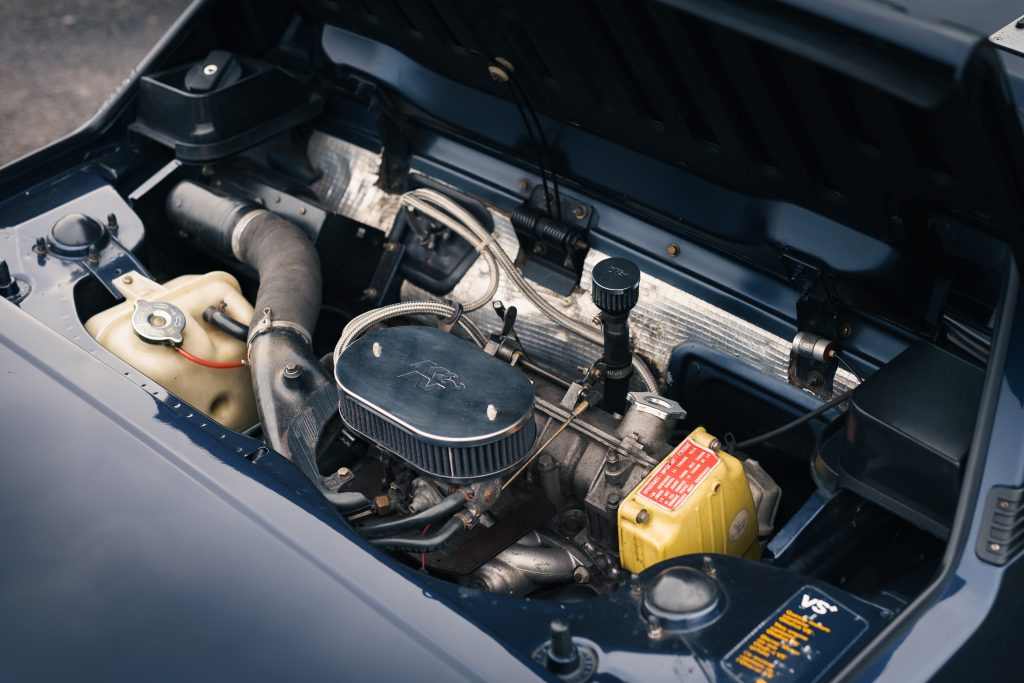
There is some good news when it comes to the engines. Both the 1.3- and 1.5-litre motors are long-lived and thrive when serviced routinely which should include a new cambelt every 25,000 miles or three years.
However, worn bushes can lead to sloppy shift actions in both gearboxes. This can also lead to internal damage to the transmission as it becomes harder to select gears, and spare parts for either ’box are rare. Check if the engine has had the correct coolant to prevent corrosion. The radiator is mounted at the front of the car and coolant travels to and from the engine via pipes running inside the car’s body. If they rot, they rust the car from the inside out.
The rest of the X1/9’s mechanic components are easy to work on, though the rear wheel bearings require a special tool to extract. And up front, check the condition of the brake master cylinder as they are known to leak, and access is tricky.
Which is the right X1/9 for you?
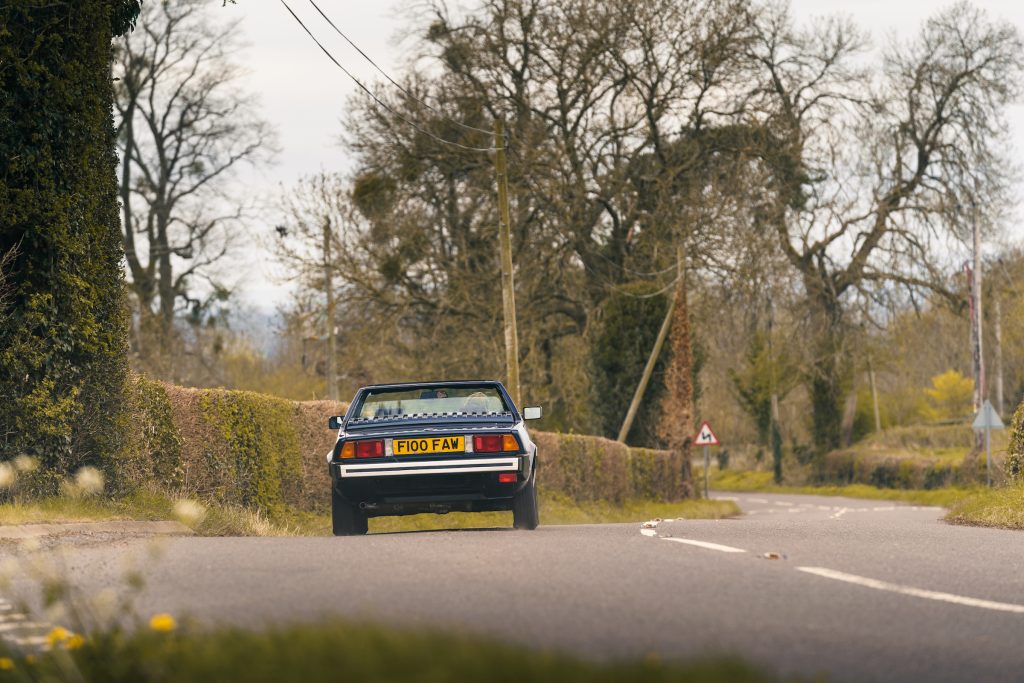
While the earlier 1300 version of the Fiat X1/9 represents the car in its purer form, they are hard to find in the UK with right-hand drive. Left-hand drive imports are around, but you need to be very sure of their condition before buying. This leaves the 1500 as the more sensible bet for UK buyers for both the extra kit, and a bit more power. The general consensus among experts is to look for one from the end of the X1/9’s production run as they are better equipped.
More sound advice from X1/9 specialists is to spend more on a good car rather than saving a bit of money on one that is a little rough around the edges. The cost of restoration and replacement parts will soon eat up any saving you made on the initial purchase price.
Read more
Retro Rematch: Fiat X1/9 vs Triumph TR7
Icon vs Underdog: Alfa Romeo Spider vs Fiat 124 Sport Spider
Concept Cars That Never Made The Cut: Fiat 850 City Taxi










The x19 was totally over rated. Basically it was rubbish, not mid engined as claimed by many, its rear engined,abd without all the development the 911 needed to conquer issues that brings. When it was launched, anything from abroad was great and the equivalent British car of time rubbished. (Midget)
I raced both. A decent Midget would leave an x19 all day long, on any track and any road. The A series engine was loads better in standard form and responded to tuning infinitely better. On limit MG was predictable and controllable. The x19 was neither. Yep, with fortunes spent on suspension it could be improved but in as sold condition it was no match for the slower (in a straight line) MG.
The A series should have been developed and folk should have been more objective in purchasing cars. Honestly, the x19 was and is appalling.
I disagree! Lovely handling and great to drive. True they rust like fun but ALL cars of that period did that in great style. I will not be selling my 1500 any time soon!
The first true mid-engined (only the deranged would claim otherwise- see Floyd above) car for the masses and one of the most underrated cars produced- Fantastic Lampredi engines which are willing and easily modified for much more power and torque. Sublime handling (not quite Lotus Europa but not far off it) in stock form without any modifications. Usually winning their class at historic motorsport events and mixing it with much more exotic and powerful cars to this day in historic racing events. The rally version was quicker than the Lancia Stratos with very little development before the project was sadly shelved in favour of the 131 abarth.
In another league to a MG midget or Triumph or anything produced in the UK at that time. Indeed the x1/9 1500 was 4 seconds a lap faster around Montlhery circuit than a MK II Escort RS2000 when tested by Motorsport magazine back in the early 80’s. I don’t remember the MG midget being quite as quick as an RS2000?
Here’s the motoring press view on both
What’s the best to drive?
Fiat – by a country mile
You need to be an ardent Midget fan not to concede that the Fiat is in another league and from another era. Not for nothing was the X1/9 dubbed a baby Ferrari thanks to its thrills behind the wheel. Although not fast, the Fiat thrives on hard use and sounds entirely contented when doing so. The delicate touch handling remains excellent to this day and you really feel that you’re driving something special in the X/19 because it requires a more calculated approach when trucking on.
In contrast the MG Midget is like a miniature Morgan by comparison with appreciably lower cornering limits, although its traditional front-engined rear drive layout can withstand a much harsher, heavier-handed driving style. Best of all, like the MGB – perhaps even more so – the real beauty of the MG comes from its utter predictability meaning you can have tremendous fun without breaking the speed limit. Sitting over the rear axle the MG Midget responds like a go-kart although sadly rides like one, too.
While the X1/9 is the purist’s pick, those new to mid-engined cornering may fi nd the car too darty and nervous (especially in the wet), while with less weight up front the front brakes are more prone to locking in the damp. What the Midget loses in precision it counters with its confi dencebuilding feedback. Plus with the myriad of suspension tuning upgrades around from specialists, this old timer can be made to handle very well indeed.
Like the Fiat, the older, smaller engines are the sweetest and lose little in performance.
The Midget performance was tardy by 1972 standards yet feels brisk thanks to the amount of noise generated by the engine and serious wind roar.
In this respect the Fiat X1/9 is the more civilised to use even if the Targa top isn’t exactly silent. However it is beautifully easy to remove and store in the front luggage compartment – so much so that we’re amazed why this type of hood design virtually died a death by the time the X1/9 bowed out in 1989!
Early 1300cc X1/9s are fussy at speed, less to the fi ve-speed 1500 which makes the Fiat better suited to modern use than the absurdly low geared MG. However a £1500 Ford Sierra gearbox conversion changes all that and gives better ratios.
I’ve had seven X1/9s over nearly 35 years. Yes like any car of the era they need careful restoration, and the monocoque design may make it quite rigid but it’s also harder to rebuild than eg a Midget or similar. But on a fast b-road a well-driven X1/9 will maintain a surprisingly high average speed. And it’ll do so with a noise and a sense of occasion that little else available for sensible money can match.
If it’s rear engined (as Floyd the expert at the top claims), why is there a boot between the engine and the rear bumper?
If something that simple has confused him, I would ignore the rest of his claims, he plainly doesn’t know much.
Floyd, I have owned both a MG Midget and a 1969 Triumph Spitfire. I still own a 1980 X1/9.
The Midget being the most boring of the 3 to drive and certainly the worst in design. No finesse, or style.
I bought the MK3 Spitfire because of the beautiful Italian Giovanni Michelotti lines and design that are timeless and was surprised by the lively 1300 engine and gearbox, I had to do extensive work on suspension to bring it up to scratch. I sold it this year having to choose between it and the X1/9 because of lack of storage.
Now to the X1/9, firstly it’s a mid mount engine not sure how you get it’s a rear mount when the engine is in front of the back wheels. As for driving experience the X1/9 beats the Midget by a long shot, more responsive, goes hard in and out of corners and a better top end, mine is a 1300 and a 4 speed. As for design there’s no comparison, to the lack lustre Midget.
Marcello Gandinis wedge design beats every design MG could ever dream of. There’s no comparison. How could there be when his designs include Lamborghini Miura, Countach, and the Lamborghini Diablo. The X1/9 has impeccable DNA.
What I find when people see the X1/9 when driving it is one of amazement people will hang out of their cars with their phones, youths and adults alike will stand with their mouths wide open because it is totally different to the boring curves of everyday day cars which are basically out of the same mould.
Summing up the X1/9 beats the Midget in design, speed, performance, steering, functionality, and charisma and uniqueness.
I’ll take my 1980 X1/9 over a boring Stewart little Midget any day of the week.
I purchased my 1985 Bertone X1/9 in Nov 1985 right off the showroom floor. I was simply amazed at its performance and comfort to drive. I’m 6 feet tall exactly and more legs than body, so I could use another inch or two in seat adjustment but its a minor issue for me.
As for speed and handling abilities of the car, my unit’s speedometer topped out at 140 mph and I have pegged my speed gauge out multiple times driving across the flat interstate routes of eastern North Dakota in the early morning hours of June. The steering is responsive and quick with no slop in the wheel.
I’ve driven MGs Triumphs and corvettes, and in my opinion the bertone handled as well as any of these other vehicles.
Finally the price was the final reason I bought the car beyond the looks.
Right now my X1/9 is going through a refurbishment to take care of some rust issues as noted in the article and i hope to get it back on the road in the next few months in time for some summer fun.
As for Floyd, he’s nothing more than a MG elitist.
Bertone ROCKS!!!
Bob S
I owned 3 Fiat X1/9’s during the period 1980-1989. My first car was a 1978 1300cc Serie Speciale and then had two 1500cc models. I was Club Secretray for the UK Fiat X1/9 Owners Club for a time too.
In short, an absolutely brilliant little car that ‘punched way above it’s weight’. It ran rings round contemporary sports cars of the day. MGs & Spitfires were crude and the TR7 more ‘saloon like’ in comparison. It’s relative lack of power and propensity to rust were it’s main downfalls. It certainly deserved more development than it got from Fiat or Bertone.
I had many epic drives and also some scary moments in mine. Easily induced front brake lock-up in the wet made motorway journeys in bad conditions a tense affair. However, when the sun was shining, the roof was off and Van Halen was blasting on the stereo, there was very little to touch the X1/9.
I eventually swapped allegiance and bought a Mk.1 Toyota MR2 – which was a great car but never had the character or delicacy of the Fiat. Later mid-engined forays included a Lotus Esprit and a Lambo Jalpa. Despite their style and ability, it’s the Fiat that I remember most fondly.
Having said all that, I don’t want another. I’ve thought about it. I even test drove one a few years back with some intention to buy. I didn’t. I don’t want a fragile semi-classic with limited spares and servicing options. Too much hassle. A ‘time capsule’ example might be tempting though…
Seriously, Floyd, you lost me at “not mid-engined”! They just are. Simple as that. I’ve had two and versus my A-H Sprite or any number of friends’ other sports cars that I’ve driven, they’re an absolute cracker. Sure, they’re “momentum cars” that need to be pressed hard at the top of their rev ranges but once you’ve worked that out, they’ll out handle nearly anything, old or new.